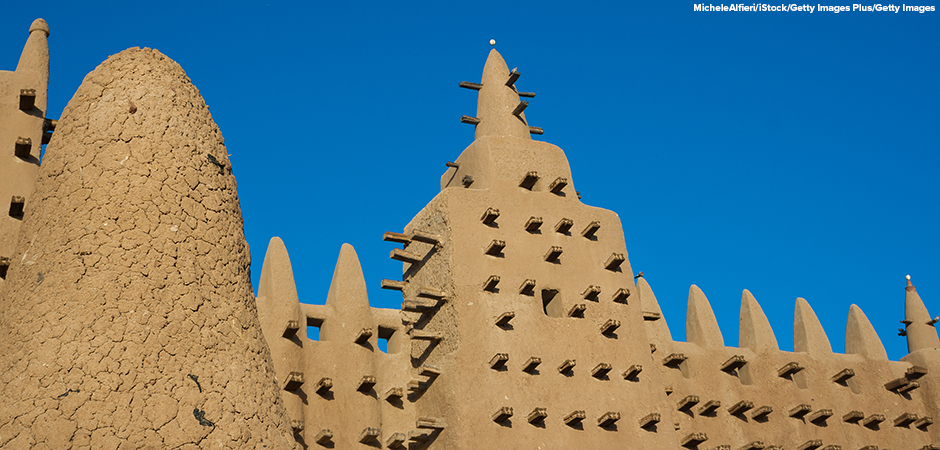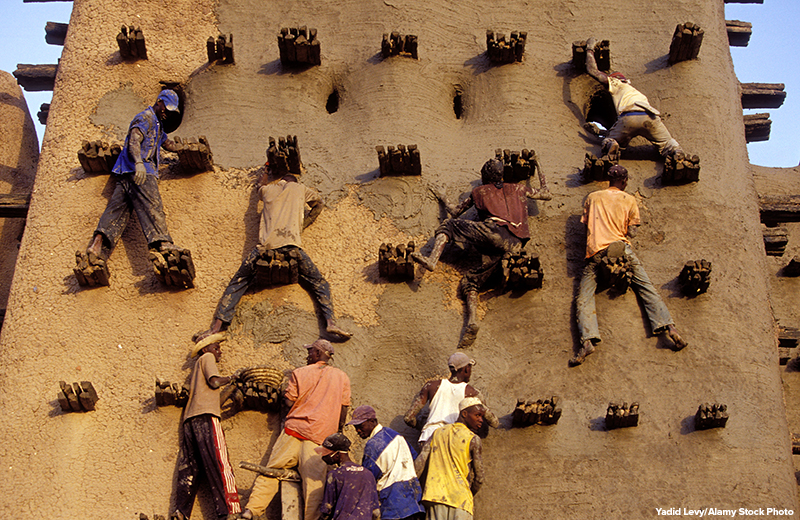
The city of Djenné is located in the Inland Niger River Delta of West Africa. This small city is one of the most culturally significant locations in the nation of Mali. It has long been a center of trade and Islamic learning, closely connected to the famous city of Timbuktu. At the heart of Djenné stands the Great Mosque. This mud-brick building is a symbol of Mali’s cultural and religious history.
The Great Mosque
The original mosque (an Islamic place of worship) was built in the 13th century. However, this building fell into ruin during periods of conflict. The current structure, built in 1907, was made using sunbaked mud bricks, sand, and palm wood in a traditional West African style. It is the largest mud-brick structure in the world. Today, it is recognized as a UNESCO World Heritage site and attracts global interest for its historical and cultural significance. UNESCO, the United Nations Educational, Scientific, and Cultural Organization, is an international organization that identifies and protects sites of cultural, historical, and environmental significance around the world.

The Annual Replastering
Maintaining the mosque requires frequent attention. Each year, the people of Djenné gather for an annual event to replaster the building’s walls. They apply a new layer of mud to protect it from the coming rainy season. Without this maintenance the building would begin to erode. This yearly replastering is more than just a practical event. It represents community unity. Everyone in Djenné works together to replaster the mosque. Women and girls bring water from the river to mix with the clay. Men and boys climb the mosque to apply new mud. This tradition often draws in many tourists, which makes it an important part of the local economy.
Facing Threats to the Replastering Tradition
Unfortunately, ongoing conflicts in Mali have threatened both the restoration process and tourism. This has led UNESCO to place the mosque on its list of World Heritage sites in danger. Security concerns have made it difficult for tourists to visit Djenné, causing a major decline in the town’s tourism industry. In 2022, the annual replastering was nearly canceled due to unrest in the area.
Despite these challenges, the people of Djenné continue their efforts to preserve the mosque. The annual plastering event serves as both a cultural tradition and a vital act of preservation. It ensures that the Great Mosque remains standing for future generations. The people of Djenné remain committed to protecting their heritage, recognizing the mosque as a symbol of peace and resilience.
